| Rye %: | 100% |
| Stages: | Sponge, Scald, Scald-sponge, Final dough |
| Leaven: | Rye sour culture |
| Start to Finish: | 11 hours |
| Hands-on Time: | 40-50 minutes |
| Yield: | One 2¼ lb/1.0 kg loaf |
I’d been meaning to make Vitebsk Rye for some time – ever since I found it in Mike Zhuravel’s magnificent Russian-language bread blog, O Khlebye. The result made me wonder why I’d waited so long: this is a truly splendid Belarusian rye bread.
Vitebsk is in northeastern Belarus, very close to the Russian border but also near enough to the Baltics to show their influence as well. Like another Belarusian classic, Minsk Rye/Minskiy Chleb (see The Rye Baker, pp. 266-269), it consists of 100% white rye. Unlike that bread, however, Vitebsk Rye features a pale rye malt scald and scald-sponge, and uses an 85°F/30°C proofing box to accelerate the sponge ripening, scald development and scald-sponge fermentation.
The formula also calls for dark molasses (which gives the loaf its golden-brown color) and a tiny percentage of ground anise to create contrast against the delicate sour background, while complementing the sweetness of the rye scald with subtly musky and aromatic licorice notes.
Add to that an open, tender crumb and you have an extraordinarily complex, satisfying loaf that pairs wonderfully with cold butter, cheeses and cured meat and fish.
Sponge (Bake time minus 10.5 hours):
| Ingredient | Grams | Ounces | Baker’s Percentage |
| White rye flour | 80 | 2.80 | 100% |
| Water | 50 | 1.75 | 63% |
| Rye sour culture | 60 | 2.10 | 75% |
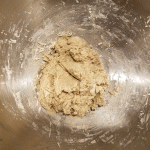 In the mixer bowl, combine the sponge ingredients by hand into a stiff dough.
In the mixer bowl, combine the sponge ingredients by hand into a stiff dough.
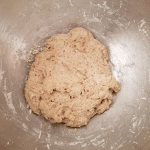 Cover and ferment at 85°F/30°C (see Note). until it shows broken bubbles on the surface and has doubled in bulk, about 4 hours.
Cover and ferment at 85°F/30°C (see Note). until it shows broken bubbles on the surface and has doubled in bulk, about 4 hours.
Scald (Bake time minus 9.5 hours):
| Ingredient | Grams | Ounces | Baker’s Percentage |
| White rye flour | 190 | 6.70 | 100% |
| Hot (160°F/65°C water | 380 | 13.40 | 200% |
| Pale rye malt, ground and sifted | 30 | 1.05 | 16% |
| Ground anise seed | 4 | 0.15 | 2% |
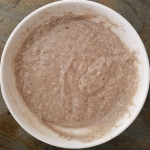 In a separate pre-warmed bowl, combine the scald ingredients by hand into a thick porridge, cover and let it sit alongside the sponge for 3 hours. It will loosen considerably and have a very sweet taste.
In a separate pre-warmed bowl, combine the scald ingredients by hand into a thick porridge, cover and let it sit alongside the sponge for 3 hours. It will loosen considerably and have a very sweet taste.
Scald-Sponge (Bake time minus 6.5 hours):
| Ingredient | Grams | Ounces | Baker’s Percentage |
| White rye flour | 104 | 3.65 | 100% |
| Sponge | 190 | 6.65 | 183% |
| Scald | 604 | 21.30 | 581% |
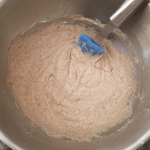 In the mixer bowl, combine the sponge, scald and white rye flour. Stir to blend.
In the mixer bowl, combine the sponge, scald and white rye flour. Stir to blend.
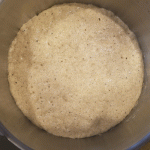 Cover and ferment 85°F/30°C for 5 hours (see Note). It will show broken bubbles on the surface and nearly triple in bulk.
Cover and ferment 85°F/30°C for 5 hours (see Note). It will show broken bubbles on the surface and nearly triple in bulk.
Final Dough (Bake Time minus 90 minutes:
| Ingredient | Grams | Ounces |
| Scald-sponge | 898 | 31.60 |
| White rye flour | 290 | 10.25 |
| Salt | 10 | 0.35 |
| Unsulphured molasses | 36 | 1.25 |
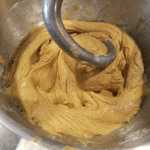 Add the final dough ingredients to the scald-sponge and use the dough hook at low (KA2) speed to mix until the dough is fully blended into an evenly colored loose dough, 5-6 minutes.
Add the final dough ingredients to the scald-sponge and use the dough hook at low (KA2) speed to mix until the dough is fully blended into an evenly colored loose dough, 5-6 minutes.
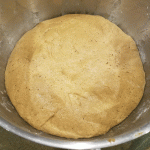 Cover the bowl and ferment at room temperature (70°F/21°C) until the surface shows broken bubbles and the dough has doubled in bulk, 60-70 minutes.
Cover the bowl and ferment at room temperature (70°F/21°C) until the surface shows broken bubbles and the dough has doubled in bulk, 60-70 minutes.
 Use a wet dough scraper to turn the dough onto a well-floured work surface and use floured hands to shape it into an oblong loaf. Carefully place the loaf onto a parchment-lined sheet pan.
Use a wet dough scraper to turn the dough onto a well-floured work surface and use floured hands to shape it into an oblong loaf. Carefully place the loaf onto a parchment-lined sheet pan.
Cover the loaf and proof at room temperature until the surface shows cracks and/or broken bubbles and the loaf has visibly expanded, 25-30 minutes.
Use wet hands to smooth the surface of the loaf and let stand 5 minutes.
Preheat the oven to 500°F/260°C with the baking surface in the middle. Bake without steam for 5 minutes, then reduce the temperature to 460°F /240°C and continue baking until the loaf thumps when tapped with a finger and the internal temperature is at least 200°F/93°C, 25-30 minutes, then brush the loaf with water and bake an additional 2 minutes. Transfer to a rack and let stand 24-48 hours before slicing.
Note: My high-tech oven has a “Proof” setting that allows me to keep it at that temperature. If yours doesn’t, use a proofing box or preheat your oven to 100°F/38°C, then turn it off, repeating every 60-90 minutes.
Baker’s Percentage:
| Ingredient | g | % |
| White rye flour | 664 | 100.00% |
| Water | 430 | 64.76% |
| Salt | 10 | 1.51% |
| Rye sour | 60 | 9.04% |
| Molasses | 36 | 5.42% |
| Rye malt | 30 | 4.52% |
| Anise | 4 | 0.60% |
| TOTAL FORMULA | 1,234 | 185.84% |
| Flour prefermented | 374 | 56.33% |

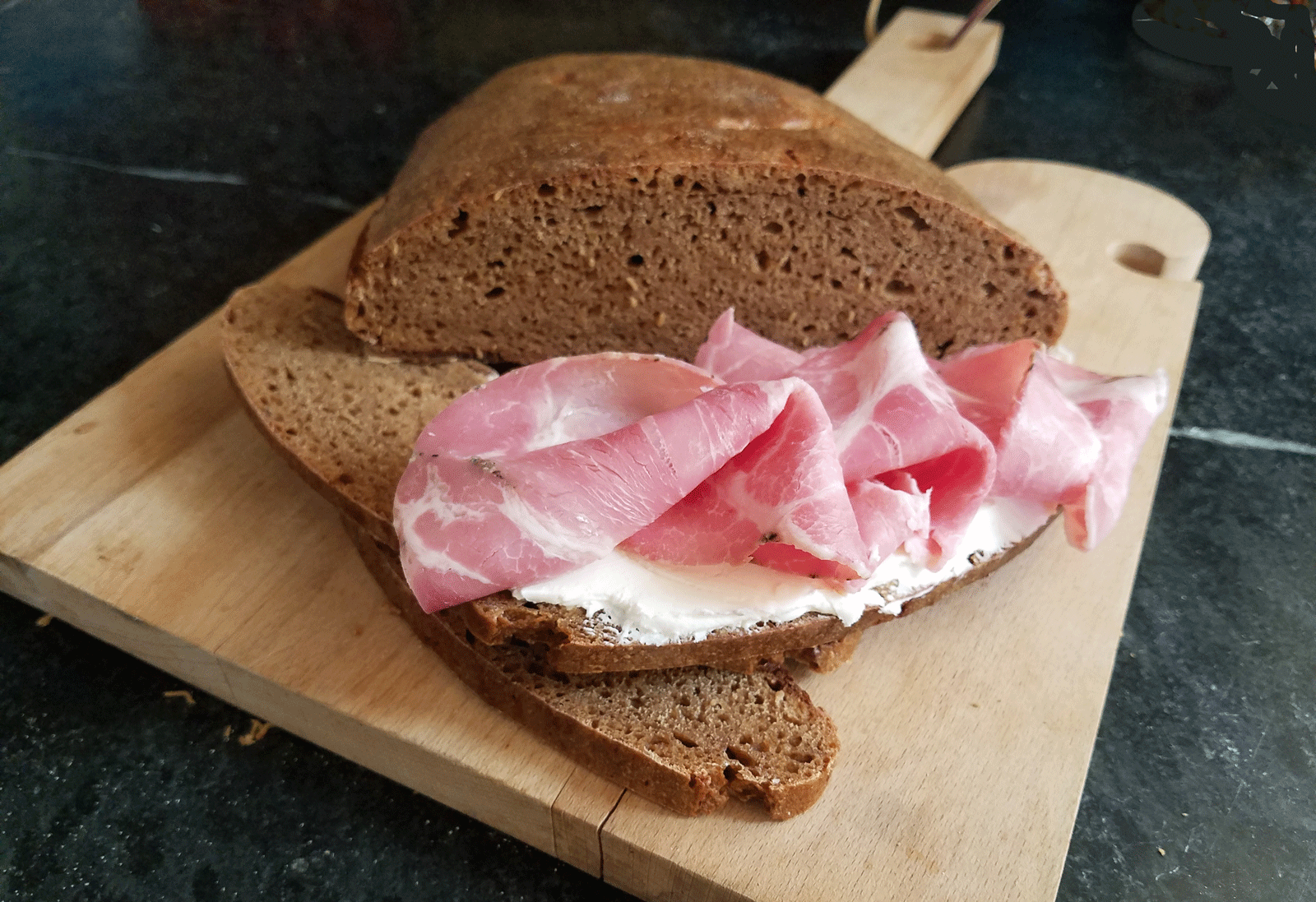
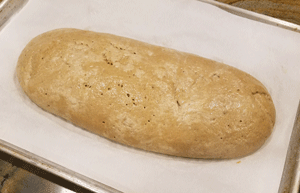
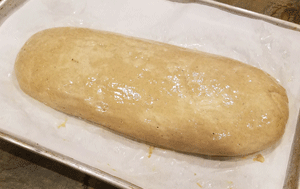
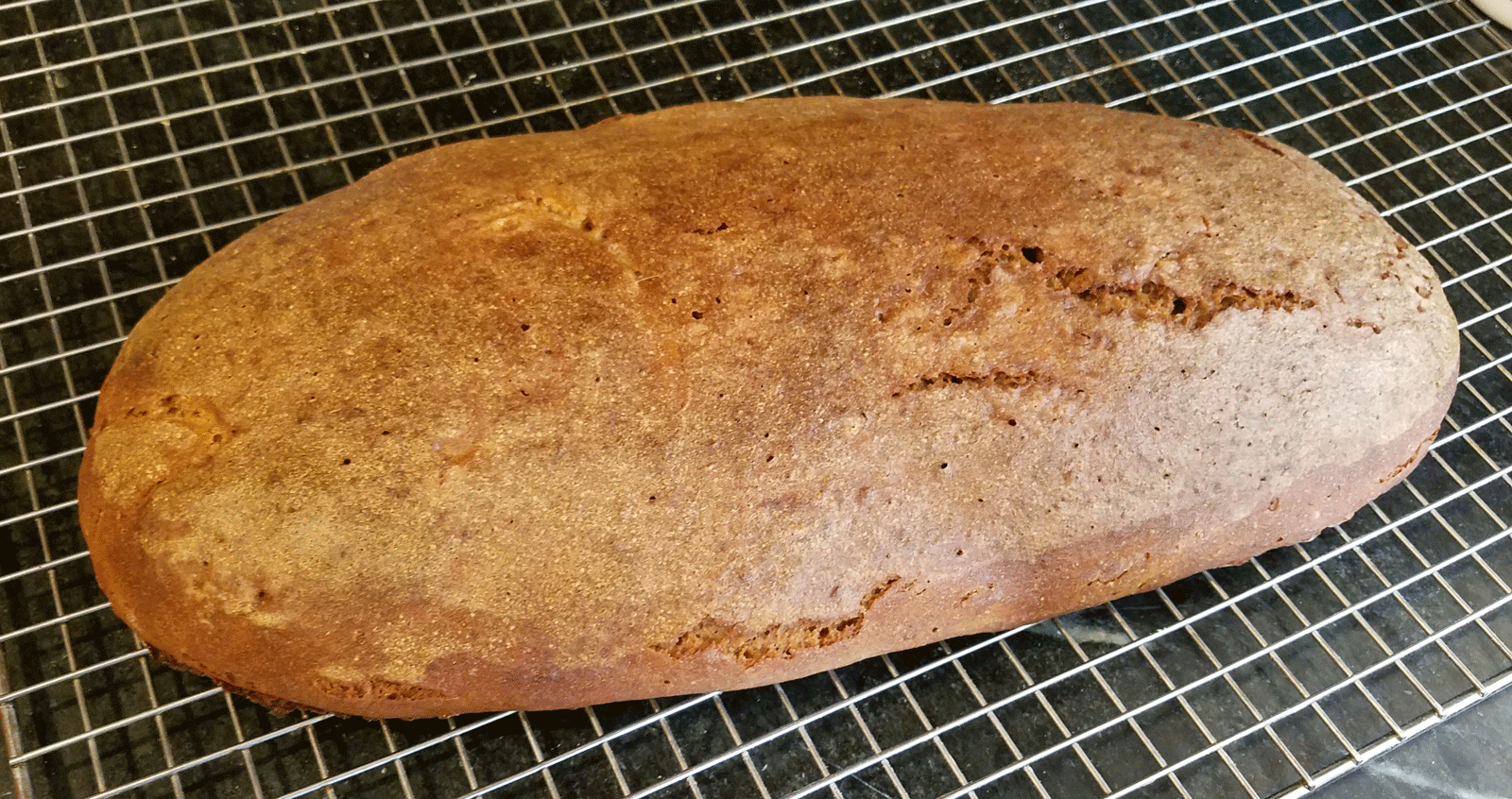
Tortoise
October 10, 2017Hi Stan,
This looks like another bake that I must try. I did bake e Minsk rye from your book and indeed it was an outstanding loaf. In looking at the write up of he Vitebsk Rye I’ve noticed what I believe to be two small typos. In the scald description you have “combine the scald ingredients by hand into a thick porridge, cover and let it sit alongside the scald for 3 hours.” but I believe that you meant to say let it sit along the sponge for 3 hours. I also found in the final dough/bake description you have “then reduce the temperature to 460°F /240°C and continue baking until the loaves thump when tapped with a finger and the internal temperature is at least 200°F/93°C”. Should this read until the loaf (singular) thumps when tapped?
Thanks for the write up. I’m planning on baking this on Thursday. I’ll let you know how it goes.
Stanley Ginsberg
October 10, 2017You’re right. Thanks for the close read …. and enjoy the bread!!!
Karen Berry
October 18, 2017Should I assume we remove the bread from the oven while proofing jwhen we reheat to 100°F?
Stanley Ginsberg
October 18, 2017no. leave the bread in the oven, but be careful not to let the oven temp go above 100F; in fact, better to shut it off at 95F. just make sure you have an accurate oven thermometer and have heat-mapped your oven.
Susan
January 23, 2019Hi! I’m experimenting with more of your recipes..
Do you bake the bread on a pan or on a stone?
sean
March 12, 2021wow this recipe turns out great!
such a nice texture and mouthfeel, and the bit of anise gives it just a bit more complexity.
gonna try this with wholegrain rye flour next time to see how it turns out